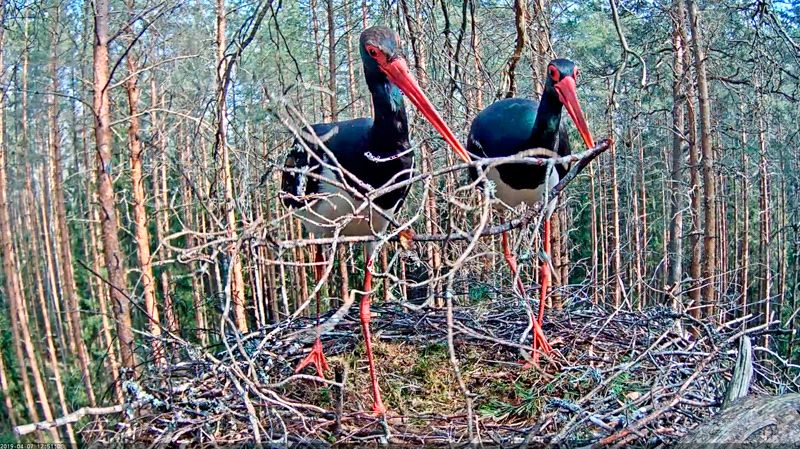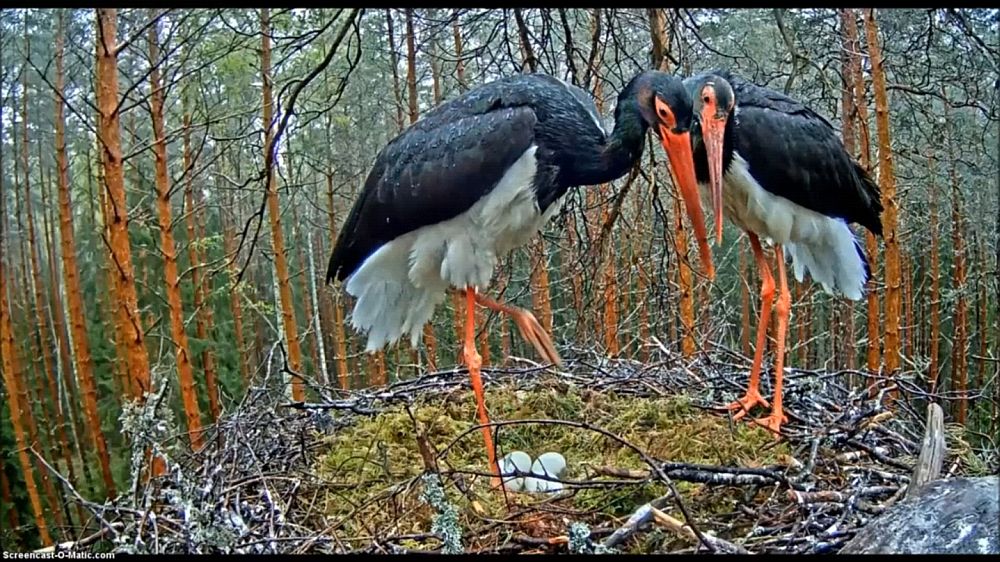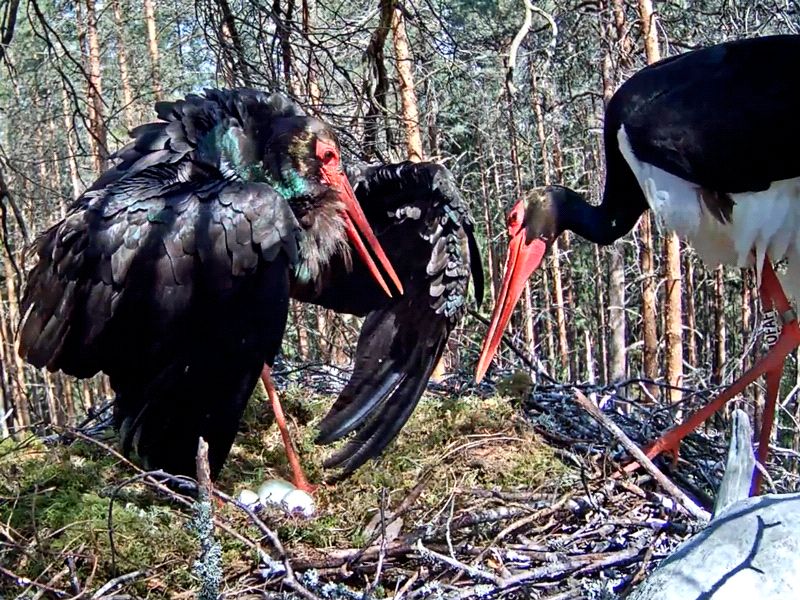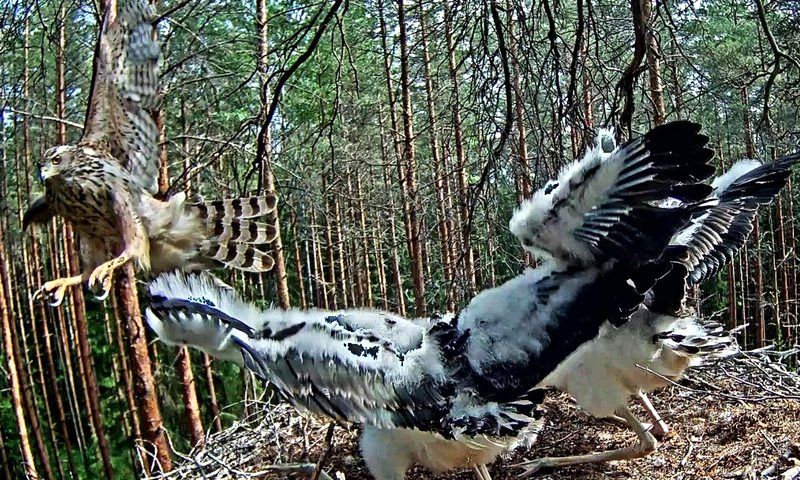Summary in Estonian written by Urmas Sellis
Estonian text posted 03.09.2019
In March, before installing the web camera in the nest, we waited impatiently for the start of male bird Karl’s migration. Karl did have a tracking device but the lack of GSM cover in southern
On March 29 the migration of male Karl was interrupted in
Although Karl evidently perished on his migration the nest did not remain empty. The male that had already been inspecting it earlier appeared on April 2 and on April 4 our familiar female Kati arrived. If the previous male Karl had not had rings on his legs we would probably have thought that he had returned. The new male was called Karl II.

Breeding in Kati and Karl II’s nest started in the usual way, even quickly (image caught by forum member Anne7)
On April 12 we could see the first egg in the nest and by April 18 there were four eggs there which were at once carefully incubated.
During the incubation and also later a foreign male, with Latvian rings on his legs (white 0FAF), visited the nest. According to our Latvian colleague Maris Strazds this black stork was ringed in
Latvian black stork 0FAF searches for a nesting territory. Incubating female Kati fends the stranger off. Where OFAF might find a suitable nesting place we maybe will not know. But it is possible that we will see him again in the future around this nest (to see the video click on the image; the video was recorded by forum member Mary Jane)
On May 16 chicks were hatched from three eggs and on the next day also from the fourth egg, It was predictable that four chicks would not remain in the nest because quite often in this nest female Kati has adjusted the number of chicks. So also this year – on May 23 Kati removed one chick, probably the last to be hatched. But three chicks did not remain in the nest either because on June

The third chick is on the ground, eaten by the goshawk. At the time both adults were out searching for food for the chicks
The two remaining chicks still had to ward off attacks from the goshawk repeatedly but managed it well.
A video cut of the goshawk attack when two chicks had been left in the nest (video recorded by forum member Crissy)
Maybe the death of the third chick was lucky for the remaining ones because the supply of food was not generous in this dry year. Evidently also last year’s drought had some effect because fish in suitable sizes and amphibians were few.
Similarly to last year, the further activities of the two juveniles can be followed by their tracking devices. The rings and tracking devices were set in place on July 12 (Ain, Mati, Ants and Urmas were in the team). Both chicks fledged. Now afterwards we know that the meager food and the goshawk attacks made the behaviour of the juveniles unpredictable. Finding the second one of them took almost an hour and a half because we were not quite prepared for its flight out. After a long search the
Last year voluntary fund raisers among the black stork camera watchers supported the acquisition of three transmitters, One transmitter that was returned to us after one chick last year perished in
The chicks were named by the forum members, after their leg rings, numbers
The video summary of the nesting in

The migration of both young birds, Aru and Oru, can be followed on the migration map. At the time of making the summary both were in their first migration stopping places, Oru in
However, all did not work out so well for all black storks! For instance, in the nest of Eedi, traceable on the migration map and nesting nearby, there were three chicks but they all perished before fledging. The likely cause was lack of food.
In black stork nests with web cameras elsewhere the situations differed. In the Hungarian nest the young birds perished in the storms. In contrast in




